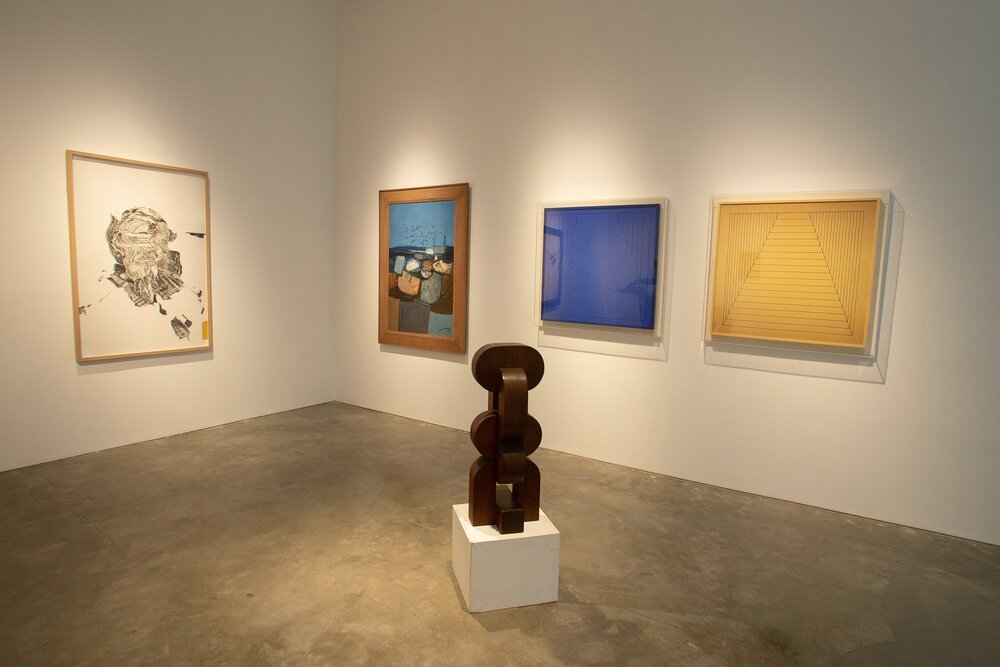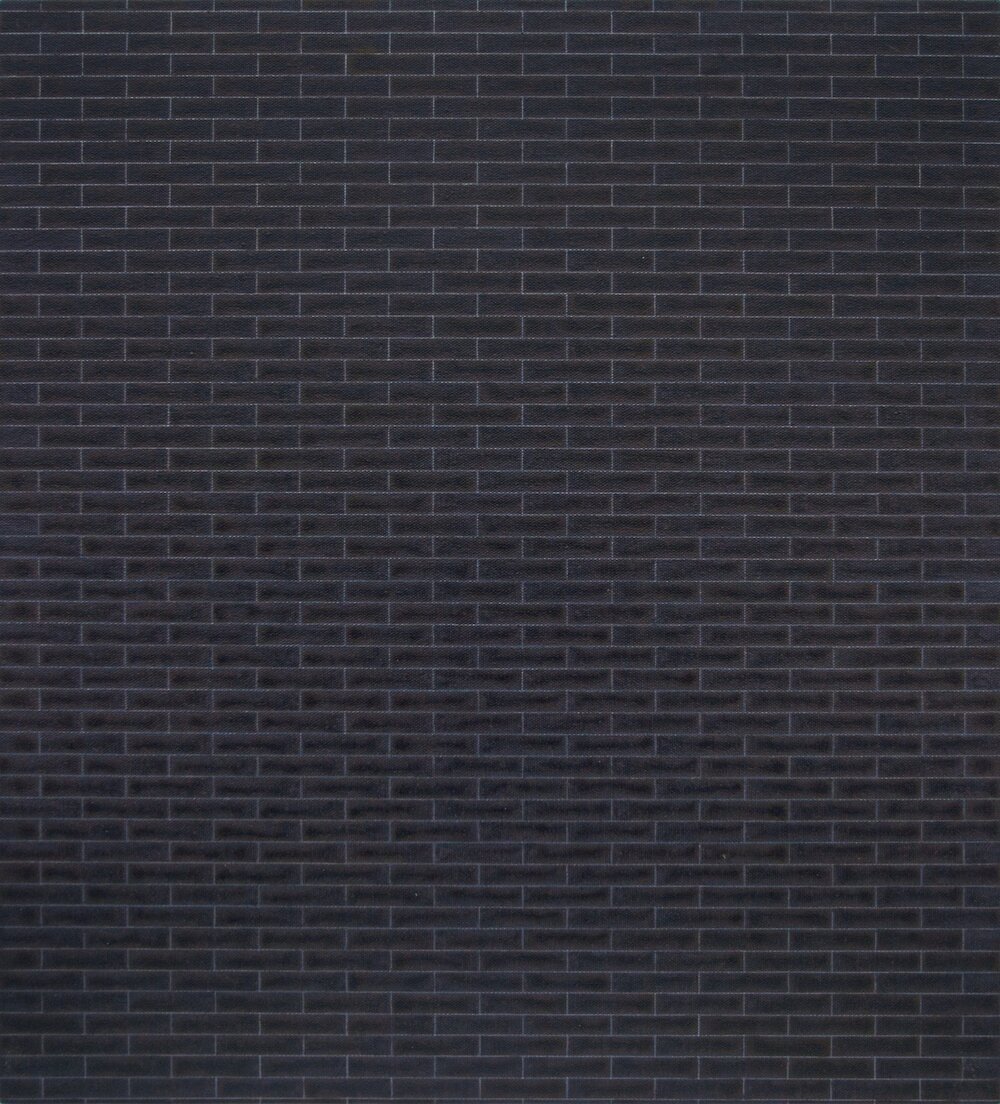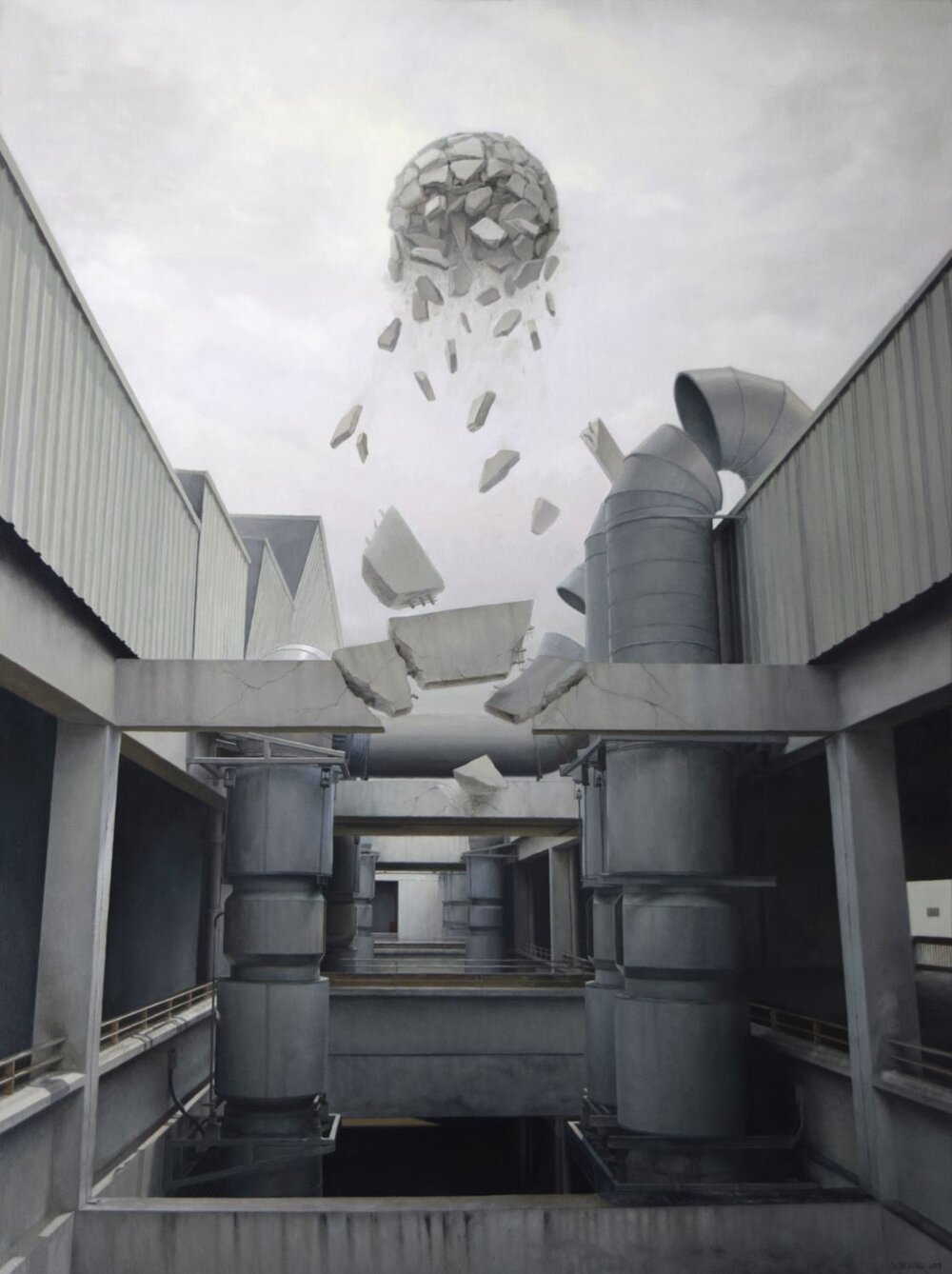Review of ‘Considered Gestures’ at Silverlens Galleries
Redefining Filipino non-representational art
By Riley Yuen
Hosted at Silverlens Galleries in the Philippines to welcome the new year, ‘Considered Gestures’ aims to reconstruct common perceptions of abstract art. Curator Yael Buencamino has framed the exhibition around two generations of Filipino non-representational art, exhibiting the works of modern artists Lee Aguinaldo, Arturo Luz, Jose Joya, and Fernando Zobel, and contemporary artists Gary-Ross Pastrana, Patricia Perez-Eustaquio, Gina Osterloh, and Maria Taniguchi. From Aguinaldo’s calming transitions between green, white, and blue in ‘Green Circulation No. 4’ to Osterloh’s studies of lines and flat colour in ‘Hair Hallway Boogie, blue’, one is able to see the ways that the practice of abstract art pushes against its own boundaries.
Lee Aguinaldo, ‘Green Circulation No. 4’, 1973, acrylic (aquatec) on marine plywood, 92.5 x 92cm. Image courtesy of Silverlens Galleries.
Gina Osterloh, ‘Hair Hallway Boogie, blue’, 2017, archival pigment print, 86.36 x 90.17cm. Image courtesy of Silverlens Galleries.
Buencamino’s passion for non-representational art began with visits to the National Gallery of Art and Museum of Modern Art in the United States during her youth. This interest deepened through her professional development at Ateneo Art Gallery in the Philippines. During the decade that she acted as managing curator, the museum presented multiple shows that exhibited many of the same artists from ‘Considered Gestures’, including Aguinaldo, Luz, Joya, and Zobel.
The focus on the non-representational form in this particular exhibition is meant to offer relief to the viewer. In a world where people are constantly bombarded by visual stimuli, an exhibition filled with abstract art allows the visitor to break away from incessant meaning making, image recognition, and interpretation. Additionally, by placing these artworks in a white-cube space, the experience is heightened, and it is as if the viewer and art exist in a void detached from reality. Indeed, the sterile walls and environment allow the pieces to occupy their own space and amplify the otherworldly quality unique to art galleries.
Installation view of ‘Considered Gestures’ (2021). Photo courtesy of Silverlens Galleries.
What is highlighted in this exhibition, however, is not the identity of the artists, but the works on their own merit. As Buencamino explains, “This show was intended to exhibit the works of Filipino modern masters interwoven with those of contemporary artists to drive a conversation about the artworks without placing much of an emphasis on their art historical significance.”
Left: Patricia Perez Eustaquio, ‘Shamanisms (drawing II)’, 2018, graphite and gold leaf on paper, 150 x 100cm. Right: Jose Joya, ‘Salute to the Blue Ants’, 1972, oil on board, 122 x 8cm. Images courtesy of Silverlens Galleries.
And although the generational tension is at the forefront of the exhibition's experience, the overarching harmony between pieces in this curation is attributed to what Buencamino calls “a shared aesthetic, deliberately constructed artworks with no superfluous gestures.” Unity is found not in medium or technique, but in the genre itself. The works of Aguinaldo and Taniguchi, for example, although formally different, both seek to create a meditative space for the viewer devoid of recognisable images. Likewise, the visual similarity between Joya’s abstract expressionist oil paintings and Perez-Estaquio’s graphic and spontaneous applications of graphite demonstrates how this aesthetic of non-representational art can be perceived across mediums.
Fernando Zobel, ‘Virevia II’, 1960, oil on canvas, 111.76 x 71.12cm. Image courtesy of Silverlens Galleries.
Buencamino aims to take the modern artists out of art history and to consider them in a present space rather than to speak of them in the past tense. She hopes that in this exhibition, viewers will observe the works in a contemporary context and centre conversations about the works rather than the contributions of their creators to art history. The modern painters were praised as revolutionary for their time and were “seen from the perspective of linear progress”. But, as Buencamino rightly questions, “how forward looking were they really? Was their foray into abstraction not actually delayed by western standards?” She wishes that viewers can approach this art from a formalist approach and with fresh eyes to encourage new observations on modern pieces. Visitors are meant to explore their initial reactions to the artworks and their formal throughlines before their significance in art historical movements.
‘Considered Gestures’ seeks out the fluidity of non-representational and abstract art as it manifests in two- and three-dimensional art. Buencamino wishes to break away from the genre as being considered homogeneous, and demonstrates through her curation that non-representational art can be diverse and is constantly evolving. Artists delve into a variety of subjects, including personal and national identity, history, materiality, and the role of art itself, demonstrating how these artworks venture to go beyond what is visually present. Buencamino believes that “what allows the artworks in this exhibition to inhabit the same space is a shared sensibility driving the creation of poetic objects” and that “these are gestures acting as signifiers of something beyond, but first encountered visually without words.”
Maria Taniguchi, ‘untitled’, 2018, acrylic on canvas, 50.8 x 45.72cm. Image courtesy of Silverlens Galleries.
Viewing this exhibition, one can appreciate the breadth and depth of non-representational art as a genre. Indeed, what contributes most to its visual impact is its expansive variety of art. From Zobel’s explosive and spontaneous expressions to Taniguchi’s systemic and constrained brick-pattern paintings, we can see the many dissimilar forms non-representational art can take. This exhibition is an invitation to be present. On the white walls at Silverlens Galleries, the curation and its emphasis on the “now” allows one to savour their first interaction with a painting or sculpture and to observe the artists as they express themselves in each artwork.
‘Considered Gestures’ at Silverlens Galleries runs from 9 January to 6 February 2021. You can watch Yael Buencamino speak more on the exhibition here:
















